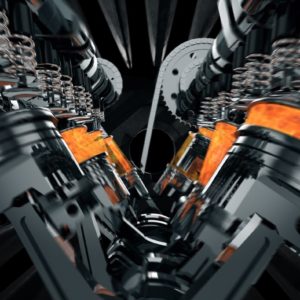Most vehicles have a misfire monitor that the powertrain control module (PCM) uses to identify whether or not a cylinder is misfiring.
The PCM uses the information from the crankshaft position sensor to calculate the engine’s rotational speed and acceleration.
If the PCM detects a misfire, on-board diagnostics will log a P1399 trouble code.
What Does the P1399 Code Mean?
Diagnostic trouble code (DTC) P1399 stands for “Random Cylinder Misfire Detected.”
There are generally two types of engine misfire一type A and type B.

A misfire type A can occur at 200 revolutions, resulting in catalyst damage. This will cause the malfunction indicator lamp (MIL) to blink once per second. The PCM/ECM will also typically deactivate the injector on a steadily misfiring cylinder to prevent catalyst overheating.
The PCM/ECM will also typically deactivate the injector on a steadily misfiring cylinder to prevent catalyst overheating.
–Richard McCuistian, ASE Certified Master Automobile Technician
Meanwhile, a misfire type B can occur at 1,000 revolutions, exceeding approximately one and a half times the Environmental Protection Agency (EPA) federal test procedure standard.
A misfire type B can also cause the vehicle to fail its emissions test.
You can learn more about P1399 and similar codes in our in-depth technical discussion about cylinder misfires.
Note: The definition of code P1399 may be different depending on the vehicle manufacturer. Consult the appropriate repair manual or repair database for the exact code definition.
P1399 on Some Honda Accord Vehicles
A P1399 trouble code in some Honda Accords is usually caused by a fault or damage in the cylinder head, cylinder head gasket, and fuel injectors.
In most cases, the malfunction indicator lamp will flash on acceleration at 2,500-3,500 rpm once this code is set.
What are the Common Causes of the P1399 Code?
- Blocked exhaust gas recirculation (EGR) passages
- Valve clearance out of range
What are the Common Symptoms of the P1399 Code?

How to Diagnose the P1399 Code
DTC P1399 is a manufacturer-specific powertrain code that applies to certain vehicles with an OBD-II system.
The steps for diagnosis and repair might vary, depending on vehicle specifications.
The process might also involve using a few tools and conducting a visual inspection of the affected component. If you’re not confident with your DIY skills yet, you can always ask for help from a trusted professional. Otherwise, you can go ahead and do it yourself.
To help you out, here are some videos that show what the process usually involves:
How to Fix the P1399 Code
Without the right tools and automotive know-how, attempting to fix a P1399 trouble code can be tricky and frustrating. If done incorrectly, the repair might even result in more damage.
If you don’t have enough experience in automotive repair, it might be a good idea to bring your vehicle to the nearest auto repair shop and leave the task to the pros. This will ensure that all steps for diagnosis and repair will be followed correctly.
But if you think you can handle the task on your own, make sure to have the necessary equipment and information before proceeding.
Guides like those from Chilton or an ALLDATA subscription contain vehicle-specific repair information, so you might want to check those out before you start.
Any information provided on this Website is for informational purposes only and is not intended to replace consultation with a professional mechanic. The accuracy and timeliness of the information may change from the time of publication.





















